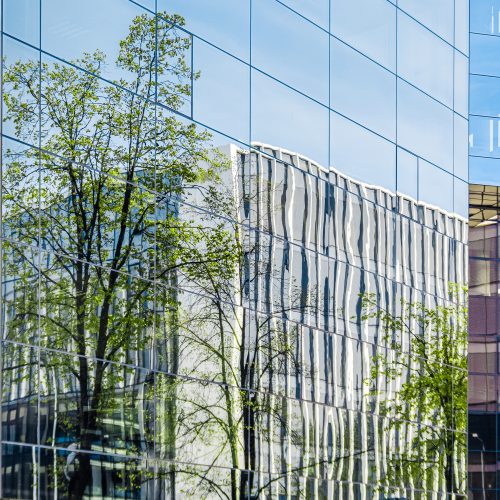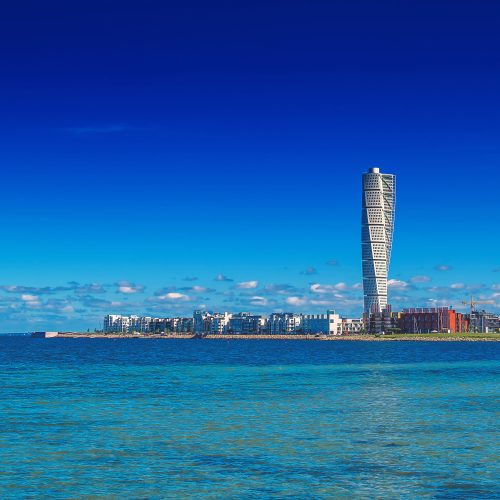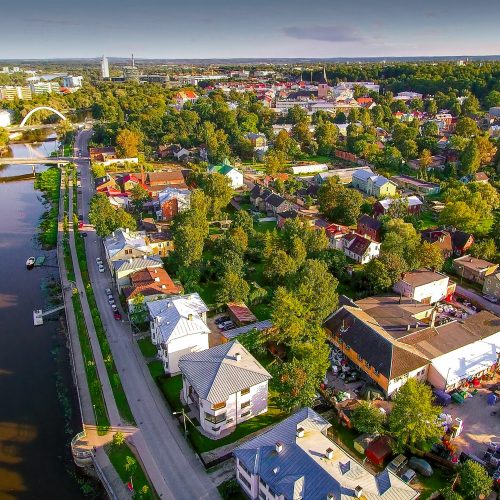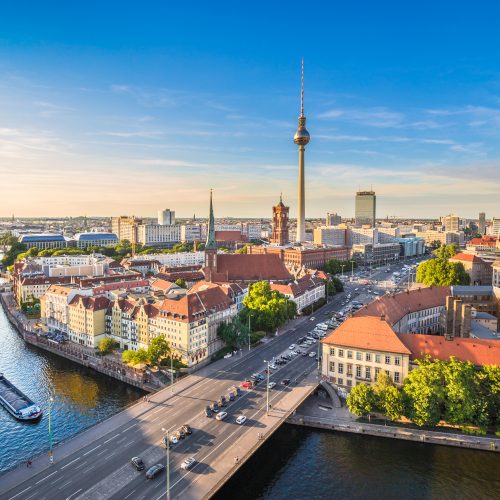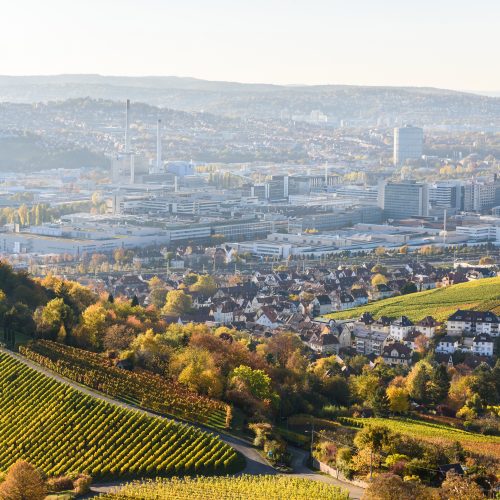Context and policy overview
Commercial and residential buildings in Tokyo accounted for more than 72 per cent of the city’s CO2 emissions in 2013. This was primarily as a result of the high number of small to medium-sized commercial and industrial facilities (around 660,000) that are concentrated in the city.
The Tokyo Metropolitan Government (TMG) has set an interim GHG emissions reduction target of 30 per cent by 2030, which has subsequently been accelerated in the city’s Environmental Masterplan to 38 per cent by 2030.
Against this backdrop, the programme of Carbon Reduction Reporting for Small and Medium Entities (CRR) was launched in 2010 with two core objectives:
- encouraging the owners and tenants of small to medium-sized commercial and industrial facilities to monitor their annual CO2 emissions
- providing policymakers with data on the building stock and providing this back to building owners and the market.
These goals are pursued by mandating for facility owners the submission of an annual report outlining CO2 emissions for the previous fiscal year. Additional qualitative information on planned and implemented emissions reduction measures must also be submitted.
There is no single GHG emissions reduction target for the programme. Instead, reporting entities are encouraged to set individual emissions reduction targets. Reports are publicly disclosed on the TMG website.
The CRR contains both a mandatory and a voluntary component. Reporting occurs as a regulatory obligation and as a voluntary measure to monitor CO2 emissions and allows facility owners to compare their performance to that of their peers.[1]
Implementation
The CRR was launched in 2010. The scheme is based on the Tokyo Carbon Reduction Reporting Programme for existing large facilities which ran from 2002 to 2005. That programme was superseded by the mandatory cap-and-trade system, also launched in 2010. The core metric by which facilities monitor and report their annual CO2 emissions is carbon intensity (kgCO2/m²).[2]
The CRR seeks to target owners of the roughly 660,000 facilities in the metropolitan area. For these facilities, the threshold for mandatory reporting has been set at between 30 litres and 1.5 million litres of crude oil equivalent. The reporting requirement also applies to businesses that own or operate multiple facilities with a total consumption exceeding 3,000 million litres of crude oil equivalent. Facilities with consumption higher than this level are expected to participate in the citywide cap-and-trade programme.[3]
In 2012, a low-carbon benchmark component was added after it became apparent that merely reporting would not be sufficient to motivate facility owners and tenants to reduce their energy consumption. Benchmarks allow owners to determine how their facility currently performs relative to the mean performance of other buildings of the same type. Later, a Carbon Report Card initiative was added to enable prospective tenants to compare the energy and CO2 emissions performance of buildings.
The CRR provides a variety of incentives to both encourage participation in the programme and spur implementation of retrofitting measures:
- A programme participation certificate – the so-called PR Sheet – has proved to be a major incentive for voluntary participation.
- Small and medium-sized leased buildings that report consistently for more than three years and perform better than the average CO2 intensity benchmarks can earn the label “Low Carbon Model Building”.
- Advice and training on low-energy strategies are provided through free energy audits, in-company training sessions with expert trainers, and industry-specific courses on energy saving measures.
- Subsidies for energy-saving equipment are available, including a green leasing scheme and tax incentives for energy saving initiatives.
Improvements in emission reductions have not been uniformly significant across all building types. For instance, schools, universities and entertainment venues have achieved significantly lower reductions.
The programme has been notable in attracting many voluntary submissions. This has improved the validity of the resulting industry benchmarks. Approximately 93 per cent of CO2 emissions in reporting facilities are related to electricity use, hence most emission reductions can be attributed to a decrease in electricity consumption. Emission reductions observed over the period 2010-13 are largely attributable to the rationing of electricity caused by the closure of the Fukushima power plant. However, emissions have not rebounded since the full restoration of power supplies. It should be noted that the increase in the carbon intensity of electricity has been largely due to the shift from nuclear to gas and coal.[4]
The CRR used multiple strategies to increase the educational value of data collected through annual reports and thus to motivate enterprises to pursue improved energy efficiency:
- The low-carbon benchmarks provide building owners and tenants with an overview of how their facility is performing compared to industry averages.
- The Carbon Report Card aims to encourage facility owners to improve their annual benchmark performance and to use report cards as green building labels.
- A series of tailored energy efficiency handbooks were provided to key industry leaders and aimed at facility supervisors in 27 types of business.
The TMG has created several partnerships with key industry stakeholders to enable the recruitment of reporting institutions. It has also reached out to corporate real estate agencies to secure their cooperation in raising tenants’ awareness of CRR.
Data verification is carried out by TMG, including checks on previous energy consumption levels and CO2 emission reports (to check for anomalies year on year). Reporting organisations are contacted when errors are identified and data problems are rectified. Additional verification is also carried out before the reports are made publicly available.[5]
Barriers and critical success factors
Landlords have faced challenges in obtaining the relevant energy data from tenants to comply with reporting requirements. This was addressed by a rule change allowing the publication of only CO2 emissions intensity (not of actual consumption) and allowing building owners to provide estimates where actual data was not readily available.
TMG officials were unable to achieve widespread disclosure of energy consumption data due to industry resistance. Public disclosure of energy consumption figures would deliver a more positive and meaningful message than data on CO2 emissions.
Despite the strategies taken to increase awareness and participation, a 2015 survey of 1,149 small and medium-sized enteprises found very low levels of awareness about some of the additional initiatives related to the CRR. Officials have also encountered challenges in engaging corporate tenants with energy efficiency issues. In addition, many recommendations provided in free energy audits are not implemented due to the splitting of incentives between owners and tenants. TMG officials have collaborated with real estate agencies to conduct tenant seminars on CRR participation and effective energy efficiency measures.[6]
Results and lessons learned
- The number of organisations participating in the voluntary reporting scheme grew by 60 per cent over the five years from 2010 to 2015.
- Over a five-year period, the companies reporting achieved an average CO2 emissions reduction of 13 per cent and cut energy use by 18 per cent.
- The reports provide a valuable database of energy efficiency measures being taken by SMEs. For example, they identify high penetration levels in terms of low-energy lighting, water-saving devices and cooling-loss reduction for refrigerated food displays. Reports cover both physical measures and behaviour change initiatives.[7]









